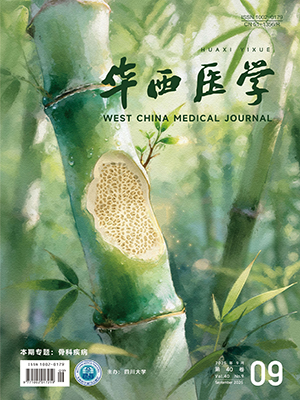| 1. |
Uchino S, Bellomo R, Goldsmith D, et al. An assessment of the RIFLE criteria for acute renal failure in hospitalized patients. Crit Care Med, 2006, 34(7): 1913-1917.
|
| 2. |
Zeng X, McMahon GM, Brunelli SM, et al. Incidence, outcomes, and comparisons across definitions of AKI in hospitalized individuals. Clin J Am Soc Nephrol, 2014, 9(1): 12-20.
|
| 3. |
Fang Y, Ding X, Zhong Y, et al. Acute kidney injury in a Chinese hospitalized population. Blood Purif, 2010, 30(2): 120-126.
|
| 4. |
Li PK, Burdmann EA, Mehta RL. Acute kidney injury: global health alert. Kidney Int, 2013, 83(3): 372-376.
|
| 5. |
Manns B, Doig CJ, Lee H, et al. Cost of acute renal failure requiring dialysis in the intensive care unit: clinical and resource implications of renal recovery. Crit Care Med, 2003, 31(2): 449-455.
|
| 6. |
Hoyt DB. CRRT in the area of cost containment: is it justified?. Am J Kidney Dis, 1997, 30(5 Suppl 4): S102-S104.
|
| 7. |
Uchino S, Kellum JA, Bellomo R, et al. Acute renal failure in critically ill patients: a multinational, multicenter study. JAMA, 2005, 294(7): 813-818.
|
| 8. |
Srisawat N, Lawsin L, Uchino S, et al. Cost of acute renal replacement therapy in the intensive care unit: results from The Beginning and Ending Supportive Therapy for the Kidney (BEST Kidney) study. Crit Care, 2010, 14(2): R46.
|
| 9. |
De Smedt DM, Elseviers MM, Lins RL, et al. Economic evaluation of different treatment modalities in acute kidney injury. Nephrol Dial Transplant, 2012, 27(11): 4095-4101.
|
| 10. |
Wang F, Hong D, Wang Y, et al. Renal replacement therapy in acute kidney injury from a Chinese cross-sectional study: patient, clinical, socioeconomic and health service predictors of treatment. BMC Nephrol, 2017, 18(1): 152.
|
| 11. |
Meltzer DO, Smith PC. Chapter Seven: theoretical issues relevant to the economic evaluation of health technologies // Pauly MV, McGuire TG, Barros PP. Handbook of health economics. Oxford: Elsevier, 2011: 433-469.
|
| 12. |
Bambha K, Kim WR. Cost-effectiveness analysis and incremental cost-effectiveness ratios: uses and pitfalls. Eur J Gastroenterol Hepatol, 2004, 16(6): 519-526.
|
| 13. |
Hamel MB, Phillips RS, Davis RB, et al. Outcomes and cost-effectiveness of initiating dialysis and continuing aggressive care in seriously ill hospitalized adults. SUPPORT Investigators. Study to Understand Prognoses and Preferences for Outcomes and Risks of Treatments. Ann Intern Med, 1997, 127(3): 195-202.
|
| 14. |
Schneider AG, Bellomo R, Bagshaw SM, et al. Choice of renal replacement therapy modality and dialysis dependence after acute kidney injury: a systematic review and meta-analysis. Intensive Care Med, 2013, 39(6): 987-997.
|
| 15. |
Wald R, Shariff SZ, Adhikari NK, et al. The association between renal replacement therapy modality and long-term outcomes among critically ill adults with acute kidney injury: a retrospective cohort study. Crit Care Med, 2014, 42(4): 868-877.
|
| 16. |
Bellomo R, Schneider AG. The real cost of conventional hemodialysis in critically ill patients. Crit Care Med, 2014, 42(4): 990-991.
|
| 17. |
Ethgen O, Schneider AG, Bagshaw SM, et al. Economics of dialysis dependence following renal replacement therapy for critically ill acute kidney injury patients. Nephrol Dial Transplant, 2015, 30(1): 54-61.
|
| 18. |
Chowdhury SR, Lawton T, Akram A, et al. Citrate versus non-citrate anticoagulation in continuous renal replacement therapy: results following a change in local critical care. J Intensive Care Soc, 2017, 18(1): 47-51.
|
| 19. |
Gutierrez-Bernays D, Ostwald M, Anstey C, et al. Transition from heparin to citrate anticoagulation for continuous renal replacement therapy: safety, efficiency, and cost. Ther Apher Dial, 2016, 20(1): 53-59.
|




